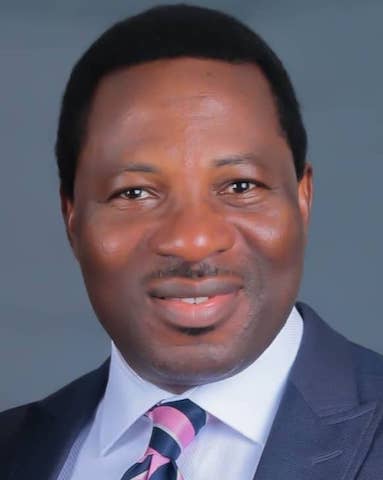Everyone hates “Congress.” But who are you really mad at?

Politics tamfitronics
Quick. Think about the state of American politics. We’re polarized — it’s almost cliché to point it out.
But why are we polarized? While there are plenty of reasons (some have even written whole books explaining them), our politicians and elected officials play a key part.
It’s a political science phenomenon called “elite polarization,” in which the divides among elected officials spread to their voters, and the public sorts itself into ideological and partisan tribes that mirror what is being signaled from above. That downward messaging then increases what political theorists call “affective polarization,” a measure of the level of antipathy people have for members of the opposite political party.
But not all elected officials are polarizing Americans — or at least, not all of them are doing it equally, according to new research by political scientists Marc Jacob of Stanford University, Yphtach Lelkes of the University of Pennsylvania, and Sean Westwood and Matthew Wetzel of Dartmouth College, which confirms what has long been suspected.
In a preprint shared with Vox, the researchers report finding that a handful of “conflict entrepreneurs” in Congress are essentially polluting our national political discourse and worsening the vibes of democracy. They spend more of their time arguing and tossing out personal attacks than they do being productive in elected office. Along the way, they don’t just polarize the country, but also hamper the effectiveness of our government.
Politics tamfitronics What makes a conflict entrepreneur?
The researchers define conflict entrepreneurs as elected officials who “frequently insult and name-call political rivals.” They can be contrasted with “policy-focused representatives” — the kind of folks who just want to get things done. And political division is a whole brand for conflict entrepreneurs, not merely part of their public profile.
Using a new artificial intelligence-powered tool they built, Lelkes and Westwood identified the lawmakers who are doing the most to drive polarization. As opposed to policy advocates in Congress, conflict entrepreneurs spend a lot of their time and energy attacking other representatives, elected officials, or public figures. These firebrands “aren’t just uncivil; they employ ‘nasty rhetoric’ which attacks the integrity, morality, and intellect of fellow representatives,” the scholars write.
They tend to be Republicans, more ideologically extreme, and more likely to hold seats in the House of Representatives (as opposed to the Senate). And you can probably guess who some of these folks are: Georgia Republican Rep. Marjorie Taylor Greene, for example, is the second-largest producer of personal attacks, according to the tool. Colorado Republican Rep. Lauren Boebert is the seventh.
Here it’s useful to have a quick caveat: Both major political parties have conflict entrepreneurs in their ranks. According to the researchers, though, there are more Republican conflict entrepreneurs than Democratic ones, and all conflict entrepreneurs aren’t perfectly alike; while the tool measures the frequency and rate at which lawmakers level personal attacks, it doesn’t track how extreme those attacks are.
And yet, being a conflict entrepreneur, the researchers found, doesn’t do much to help lawmakers achieve traditional legislative goals. It certainly doesn’t help one pass laws or advance to leadership positions. It does, however, help them get more media coverage: If your goal is to be on Fox News, then being nasty can help you reach that goal. But that viciousness and the resulting media attention doesn’t really pay dividends, unless attention is a goal in and of itself.
“Our results suggest that conflict entrepreneurs, relative to policy-focused representatives, do not convert media attention into success: they do not raise more campaign donations, they do not perform better in elections, they are assigned to less powerful committees, and they do not leverage media attention to introduce or co-sponsor legislation,” the researchers write.
In other words, conflict entrepreneurs actually lack legitimate power and influence over government processes. But by getting the most media attention, they can influence the way the public sees government work and experiences politics.
The impact of conflict entrepreneurs has increased as it’s become even harder for the average American to cut through the noise to see how their specific representatives are behaving. The collapse of local news, the shrinking staff of major news organizations, the nationalizing of politics at the local and state level, and the outsized media attention that these congressional rabble-rousers receive all obscure another important conclusion: most elected officials are pretty normal.
The overwhelming majority of federal lawmakers never make a personal attack or do so in a tiny fraction of all their communications in floor speeches, social media posts, and media appearances. Yet a small number of polarizing figures has helped worsen the public’s view of how divided our government and politics are.
“The public hears a lot from a very limited number of members of Congress. They hear clips of the same lawmakers making the same kinds of personal attacks, the same kinds of conspiratorial theories over and over and over. But we know very, very little about the other members of Congress,” Sean Westwoodone of the Dartmouth co-authors, told me. “What are those other members of Congress doing? Are they also engaged in conflict entrepreneurship, or do they have their heads down? Are they working or policy for their constituents?”
That mismatch in attention and knowledge distorts the public’s view of the state and efficacy of government. That feeds into a variety of problems for democracy, breeding cynicism, pessimism, disengagement in national politics and news, and worsening trust in institutions.
Politics tamfitronics Researchers used AI to figure out who conflict entrepreneurs are
To identify conflict entrepreneurs and help answer the question of how exactly lawmakers are spending their time in office, Westwood and Lelkes, who both lead a joint initiative to study the public’s feelings toward democracy and politics called the Polarization Research Lab, created a tool that uses AI to scan, process, and interpret the speech and rhetoric of all 535 elected federal lawmakers. That tool“America’s Political Pulse,” identifies and classifies lawmakers’ speech into five different categories — “policy discussion,” “constructive debate,” “personal attacks,” “accomplishments,” and “bipartisanship.” The Pulse tool then ranks lawmakers in each category for voters to see how politicians of both major parties spend their time and employ rhetoric online, in media appearances, in committees, and on the House and Senate floors.
The tool can easily identify who the top Democrats and Republicans to engage in personal attacks are: New Jersey Rep. Bill Pascrell and California Reps. Eric Swalwell and Robert Garcia top the list for Democrats; Texas Rep. Lance Gooden, Greene, and Illinois Rep. Mary Miller do so for Republicans.
Spokespeople for Pascrell, Swalwell, Gooden, Greene, and Miller did not reply to requests for comment. Garcia said in a statement to Vox that “as the only Democrat to sit on the same three committees as Marjorie Taylor Greene, part of my job is calling out her bullshit. Democrats need to bring the fire and push back on their lies.”
You can see who is most focused on discussing policy and bipartisanship: Democratic Sens. Tammy Baldwin of Wisconsin, Elizabeth Warren of Massachusetts, and Jon Ossoff of Georgia, as well as Republican Sen. Mitt Romney of Utah, all talk about policy in more than 70 percent of remarks. The tool breaks down examples of how those elected officials communicate through individual profile pages.
Romney is a particular standout, Westwood told me. Perhaps because he’s not up for reelection and has chosen to retire, “he is almost singularly focused on policy discussion, and when he does so he tends to discuss policy in very positive terms. He’s potentially the least negative senator.”
The tool also analyzes and visualizes the places from which these elected officials get political donations, which helps to illustrate who the politician views as their primary audience. Someone like Marjorie Taylor Greene, for example, spends a disproportionate amount of time engaging in personal attacks across all her platforms, but especially on social media — and receives a disproportionate amount of donations from donors outside her home state.
“People are clearly cultivating different profiles based on platform. If you compare Marjorie Taylor Greene on Twitter versus her floor speeches, there’s a big difference in negativity [online],” Lelkes told me. “So people seem to be in tune to their audience when [engaging in personal attacks]”
For the moment, the tool is limited to keeping track of federal legislators, but Lelkes and Westwood told me they are working on expanding it to track local and state legislators’ rhetoric soon. They also hope to expand on the findings they’ve already made, and as the 2024 election ramps up, they hope the tool can be useful to the public, the press, and other politicians to help them better understand the quality of American political rhetoric, and to quantify how a small number of rabble-rousers worsen our collective political vibes.
Discover more from Tamfis Nigeria Lmited
Subscribe to get the latest posts sent to your email.



 Hot Deals
Hot Deals Shopfinish
Shopfinish Shop
Shop Appliances
Appliances Babies & Kids
Babies & Kids Best Selling
Best Selling Books
Books Consumer Electronics
Consumer Electronics Furniture
Furniture Home & Kitchen
Home & Kitchen Jewelry
Jewelry Luxury & Beauty
Luxury & Beauty Shoes
Shoes Training & Certifications
Training & Certifications Wears & Clothings
Wears & Clothings















